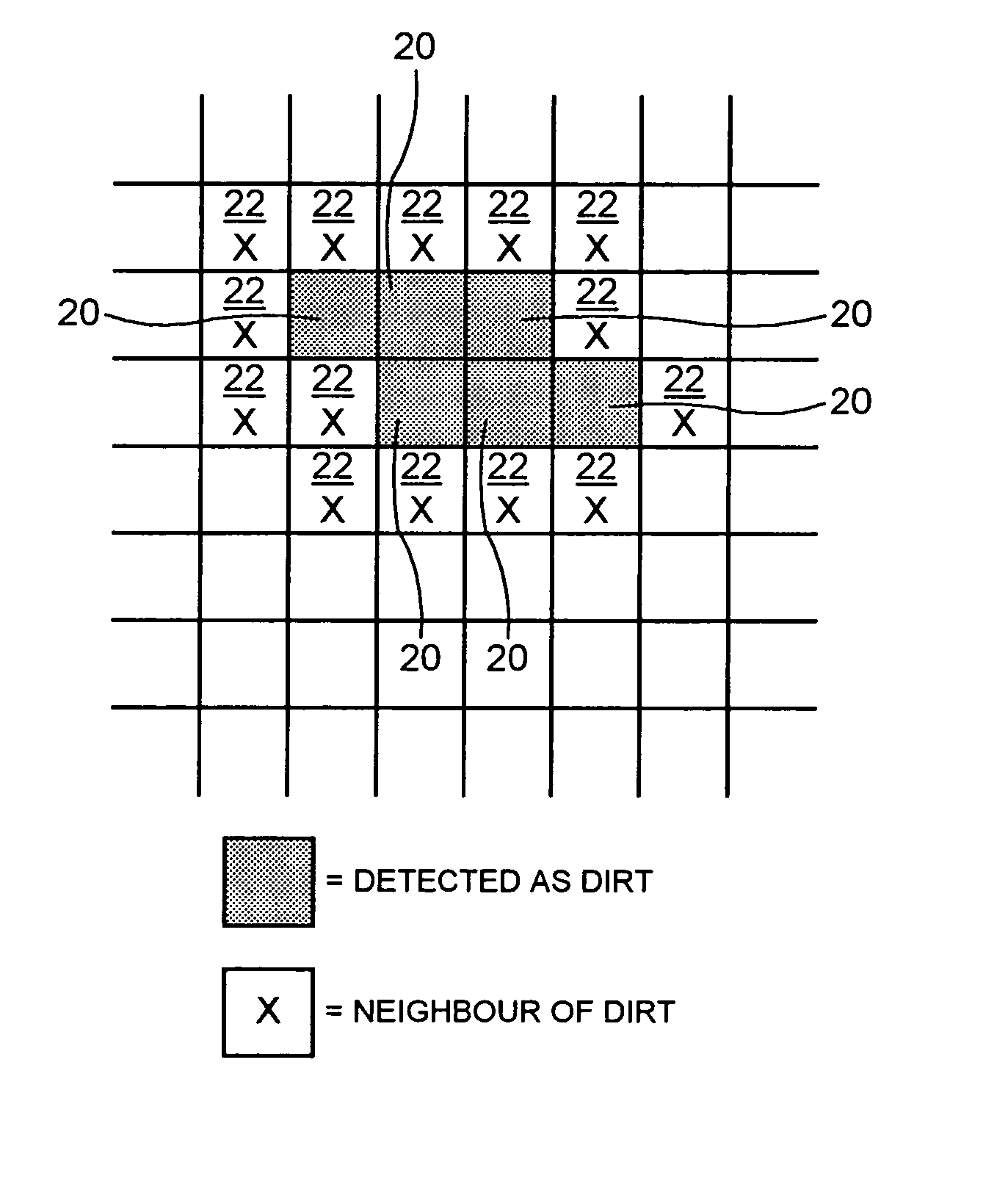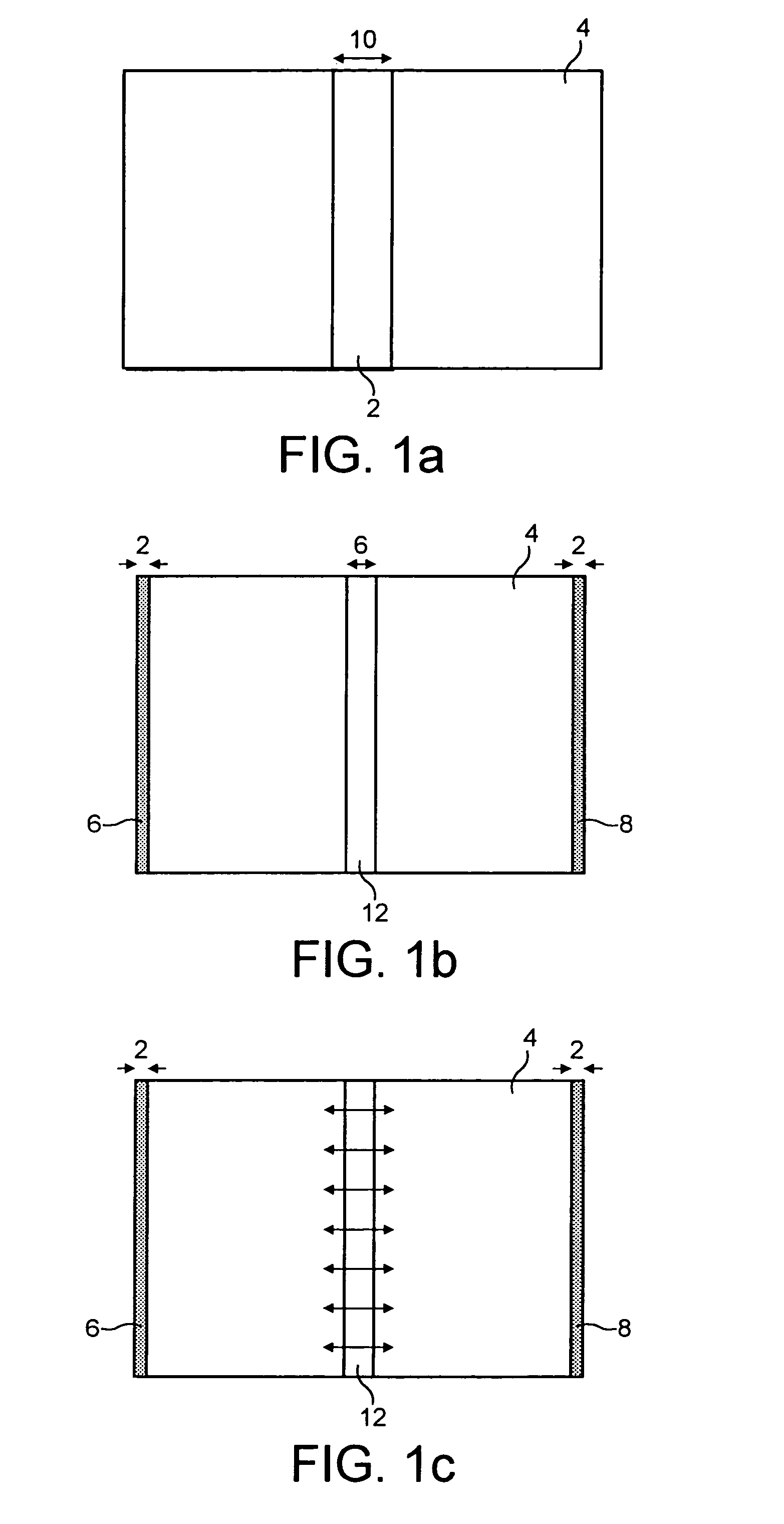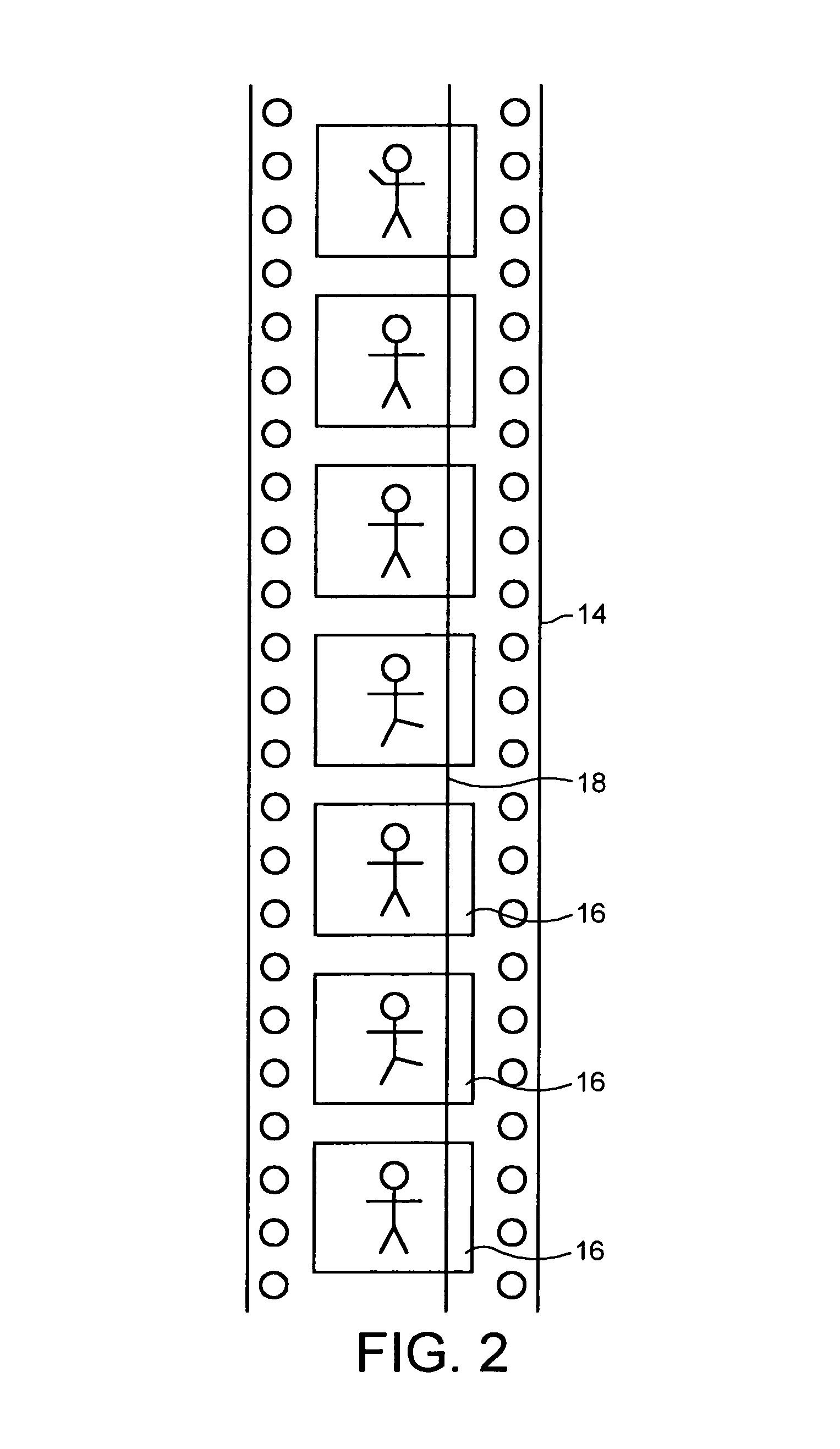Method for adjusting digital images to compensate for defects on film material
a technology of digital images and film material, applied in the direction of color television, electrical equipment, television systems, etc., can solve the problem that the threshold may not always be sufficient to distinguish defects from picture material
- Summary
- Abstract
- Description
- Claims
- Application Information
AI Technical Summary
Benefits of technology
Problems solved by technology
Method used
Image
Examples
Embodiment Construction
[0028]In a first embodiment of the invention, an operator manually enters the position of a pixel in a scratch on one frame. To do this, the operator will have positioned the cursor on a scratched pixel.
[0029]The pixel values are analysed under the assumption that ‘white’ scratches will have (in an 8 bit quantisation) values above a maximum threshold. This threshold can be varied, but typically will be value 245. Similarly, ‘black’ scratches will be below a variable minimum threshold. This threshold will typically be 10. Thus firstly, the user determines the mode of material that he wishes to scratch correct from positive or negative, which then chooses which threshold is used for scratch detection.
[0030]Scratches usually will contain continuous positional information. Thus a scratched pixel is highly likely to have another scratched pixel next to it. A two stage identification for scratches is therefore provided. It is possible to look at the neighbours of the manually identified s...
PUM
 Login to View More
Login to View More Abstract
Description
Claims
Application Information
 Login to View More
Login to View More - R&D
- Intellectual Property
- Life Sciences
- Materials
- Tech Scout
- Unparalleled Data Quality
- Higher Quality Content
- 60% Fewer Hallucinations
Browse by: Latest US Patents, China's latest patents, Technical Efficacy Thesaurus, Application Domain, Technology Topic, Popular Technical Reports.
© 2025 PatSnap. All rights reserved.Legal|Privacy policy|Modern Slavery Act Transparency Statement|Sitemap|About US| Contact US: help@patsnap.com



